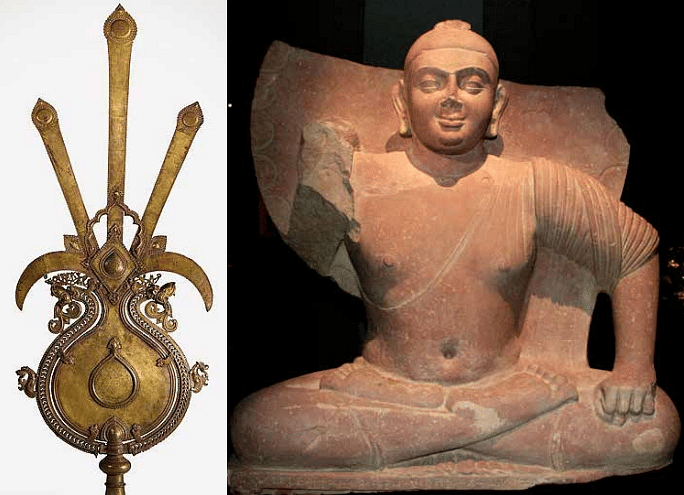Magazine
Gods For Sale
- India is losing the battle against the Heritage Mafia. And one of the biggest reasons for this is government apathy. It’s only through initiatives of private citizens that some of the loot has been recovered.

On protecting our heritage, can this government risk making a wrong call? Can Modi go down in history as a PM who could bring back our treasures, but didn’t?
On the bank of the river Kaveri in the state of Tamil Nadu lies a small, dusty village called Sripuranthan. It’s not much to speak of, except that it boasts of a temple complex built by Rajaraja Chola, which for ages has been the nerve centre of the community. The Sripuranthan temple is part of a huge temple network built by the Cholas in the ninth century.
The village was pretty much off the grid till 2006 when the Nataraja statue was stolen from the temple and smuggled out of India. What made this loot interesting was:
a) It was sold for a staggering amount of $5 million (Rs 33 crore).
b) It was bought by the National Museum of Australia (a government-owned organisation).
The Nataraja stayed lost and forgotten till 2013 when a bunch of private art enthusiasts, called the India Pride Project, located it and started lobbying for its return. Armed with photo evidence, paper trails and documentary proof, this global team used public and backdoor tactics to bring the Nataraja back to India.
In mid-2013, nobody knew where this priceless piece of heritage was.
By end-2013, the Australian government was pretty much open to return it to India.
There was one small problem though. The Indian authorities didn’t take it back. Yes, you heard that right. The Indian High Commission in Australia made no attempt whatsoever to bring the statue back. India’s looted heritage was once again a victim of the ‘not my job’ syndrome.
Are you wondering if the Nataraja ever got back to India? Well, of course it did. But not how you’d have imagined.
In an absurd twist to the tale, Australian Prime Minister Tony Abbott brought the statue with him to New Delhi while on his state visit in September 2014, and personally gave it back to Prime Minister Narendra Modi. This, after a year of wondering why Indian authorities weren’t taking it home.
If you think this is an isolated incident, think again. The US Government recently seized over 2,500 pieces of smuggled heritage valued at over $100 million.
Experts estimate that thousands of artefacts have been smuggled out of India, of which about 10,000 can be easily traced and recovered.
But more significant than the financial value of this loot is the faith value. Temples have historically been hotbeds of social activity. From the time a man is born (annaprashan) till after he dies (atma-shanti puja), temples form an integral part of our lives. As I have said earlier, “by taking away the deity from a temple, you take away its heart.”
In March 2015, the University of Chicago organised a seminar in New Delhi titled The Past for Sale: Protecting India’s Cultural Heritage. This seminar was attended by historians, academicians, art aficionados, heritage experts and journalists from across the globe. Guess who wasn’t there? Representatives from the Ministry of Culture and the Archaeological Survey of India (ASI).
Oh, and did we tell you, this seminar was held at Rajiv Chowk, less than 10 minutes drive from the Ministry?
This begets five basic questions:
- Why does a foreign government worry more about restoring India’s heritage than the Indian government does?
- Why does the art mafia consider India a soft target?
- Why is the ASI so inefficient when it comes to protecting and recovering our priceless heritage?
- Why does a private group, like the India Pride Project, take the mantle of bringing home our gods?
- Why can’t India have structures to reclaim its lost heritage?
So, we must ask: Is preserving Indian heritage a lost cause?
And how should our country protect its history?
While there are many hypotheses floating around, the practical answer lies in a rather simple construct:
Allow good samaritans to protect our heritage by allowing citizens to participate in the process of documentation and conservation of our heritage.
Make it tough for the art mafia to loot our heritage by creating a national repository and archive of high-profile targets.
Make life hell for them when they do, by creating an ‘India Heritage Squad’ with an enforcement authority. Many smaller countries around the world have this, so why can’t India?
That’s pretty much it. Period!
The simple question is: Will Indian bureaucrats and politicians take the right call and say, ‘Let’s give it a shot’?
The bigger question is: When it comes to protecting our heritage, can the Modi government risk making a wrong call? Can Modi go down in history as a Prime Minister who could bring back India’s treasures, but chose not to?
This question needs an answer and action on the ground. Quickly.
This article was published in the May 2016 Issue of Swarajya Magazine. To subscribe, click here.
Anuraag Saxena (https://twitter.com/anuraag_saxena) is the Regional CEO with World Education Foundation. He is passionate about Indian heritage and culinary history. He is based in Singapore.
Introducing ElectionsHQ + 50 Ground Reports Project
The 2024 elections might seem easy to guess, but there are some important questions that shouldn't be missed.
Do freebies still sway voters? Do people prioritise infrastructure when voting? How will Punjab vote?
The answers to these questions provide great insights into where we, as a country, are headed in the years to come.
Swarajya is starting a project with an aim to do 50 solid ground stories and a smart commentary service on WhatsApp, a one-of-a-kind. We'd love your support during this election season.
Click below to contribute.
Latest